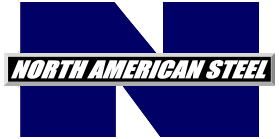Associated Steel Corporation acquired North American Steel Company in March of 2017.
You are being redirected to the Associated Steel Corporation website.
As we have communicated, Associated Steel is the sole licensed agent for all North American Steel materials.
Please use www.associatedsteel.com going forward, and be sure to change any bookmarks you may have saved.
